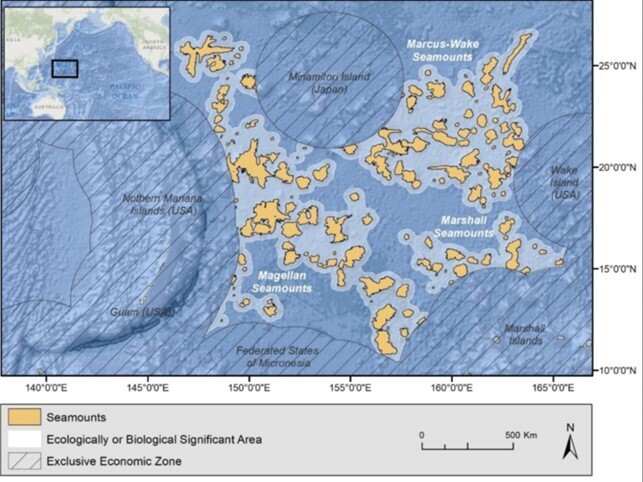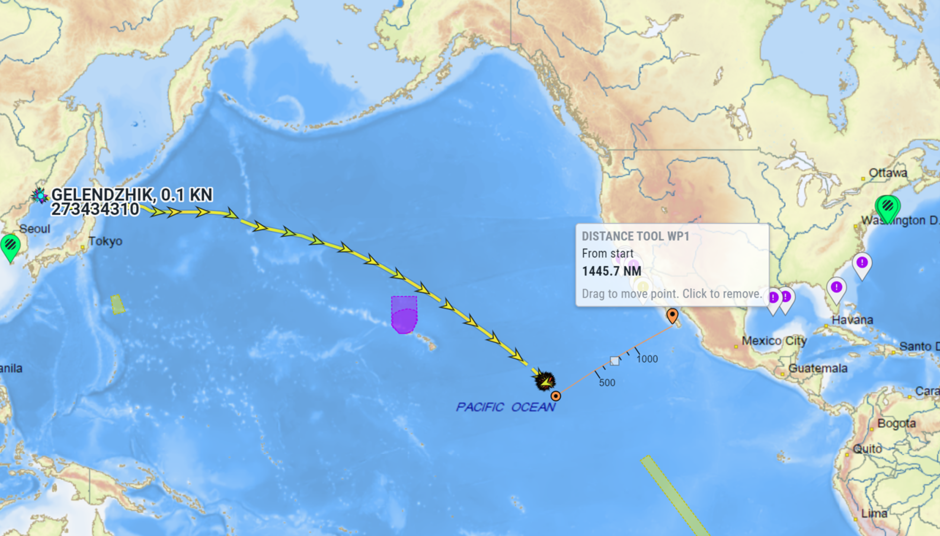Prospecting in favour of the russian Navy. Why the West should eye up at the Gelendzhik ship
What do exploring cobalt deposits and spying on US subs have in common?
russia prospects for cobalt and other rare earth metals in the Magellan Seamounts in the Western Pacific. In early July, for example, the research vessel Gelendzhik departed Vladivostok to carry out what is supposed to be geological exploration. However, in parallel, under the guise of prospecting survey, she can also conduct purely reconnaissance operations for the benefit of the russian Navy. This became known to Mind as part of a joint effort with the Eurostrategy's Investigative Journalism Centre to uncover evidence of russia's subversive activities in the world's oceans and russia's attempts to bypass western sanctions.
The Magellan Seamounts are an underwater area in the Western Pacific, covering 3,000 square kilometres. It is an arcuate underwater chain of volcanic formations, stretching 1,200 km from the Marshall Islands in the east to the Mariana Trench system in the west.
This area was granted to russia in 2010 by the International Seabed Authority for geological exploration and commercial mining of cobalt. And the decision has not yet been revised.
It should be noted that rare earth metals (REMs) are essential for the production of modern high-tech goods such as drones, electric vehicles, microelectronics and laser equipment. For many years, China has been the absolute world leader in the production of rare earths, and its monopoly has long been a source of concern for other countries.
This time, however, russia's ability to navigate freely in the Pacific Ocean, guaranteed by international prospecting contracts, should also be a cause for concern.

Why might russia be interested in these deposits? Although russia's official cobalt reserves are classified, according to some estimates by analysts from Expert, a russian business magazine, they currently range from 630-650 thousand tonnes, of which 200 thousand tonnes are proven. russia's share in global cobalt production is approximately 5 per cent.
Potential resources in the Magellan Seamounts are estimated at 270 million tonnes of ore. Of these, 0.9 million tonnes are nickel, 39 million tonnes are manganese and 1 million tonnes are cobalt. russian geologists claim to have already completed exploratory drilling at the site, where they have taken cores of cobalt-rich manganese crusts for analysis.
According to a spokesperson of Rosgeology (the russian state-owned exploration company responsible for drilling at the site. – Mind), "the main value of these fields is the unprecedented cobalt content, estimated to be 1 per cent and higher. In the majority of explored deposits, such ore content is usually around 0.7 per cent."
What does the Gelendzhik vessel do? Drilling carried out at a depth of 1,500 to 4,000 metres on sub-horizontal sections of the sea bottom from the Gelendzhik research vessel using unique deep-water drilling technology and the russian GBU-1/4000 bottom-based drilling rig, Resource World wrote four years ago.
The GBU-1/4000 ensures drilling to a depth of up to 1.12 metres when on the sea floor. It is capable of recovering monolithic rock, which allows geologists to obtain representative samples and more accurately assess the geological characteristics of the area.
Why can prospecting be just a ‘cover’? The vessel is equipped with a SIMRAD EM12-S120 multibeam echo sounder, Trimble DGPS receiver, HYDRO software, SIGMA short-baseline acoustic underwater navigation, Sonardyne ultra-short-baseline navigation, Huyse gyrocompass, MRU-5 pitch, roll and vertical displacement sensor, SVP 1M sound velocity profiler (side-scan sonar with bottom profiler), towed Neptune photo-television system, dredging equipment (1.5 m and 5.5 m direct-flow tube, Ocean-0.25 bottom-grab, dredges), gravimagnetic survey system, etc.
Thus, disguised as geological exploration or research, the Gelendzhik can deploy "hydroacoustic buoys (receiving acoustic vibrations (noise) generated by submarines)" to track underwater objects such as submarines, including American ones.

Programming the set depth from 30 to 500 metres, the trip process takes 5-9 hours in one coordinate. Throughout the mission, the crew performs over 50 tasks to determine the submarine's depth, trajectory, coordinates, etc., including the ship's specifications.
Therefore, under the guise of civilian research efforts, russia is able to perform naval intelligence missions.